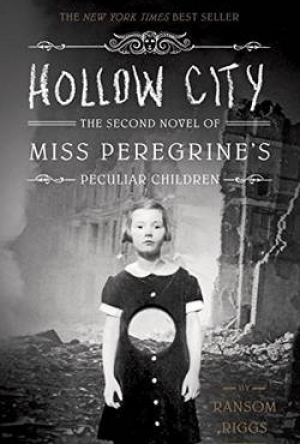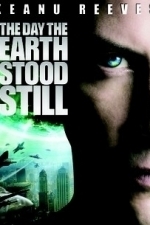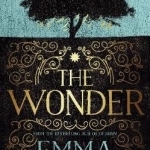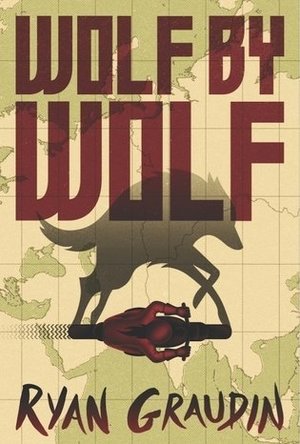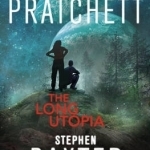Search
BookInspector (124 KP) rated Leopard at the Door in Books
Sep 24, 2020
More reviews at https://bbookinspector.wordpress.com
My favourite genre to read normally is mystery, crime or thrillers, but I try to choose different genres from time to time. I need to rest from investigations and murders, that’s where historical fiction, YA and other books come in. This book is no exception; I needed something to clear my mind, and it really done the job.
Let me begin by saying, that I loved the environment used in this book. Author portrayed the surroundings and places in this book with great detail, and made me actually feel the African spirit. So, all her travels through Africa, really helped her to describe what she felt to the reader.
The main character in this book was Rachel, and she was the one to share her life with a reader. This novel had a huge variety of very diverse characters, some of them positive and dear to the heart, and some of them really negative, which made me really angry about them. Unfortunately, I did not have any favourite character in this book, as I felt they were not fully developed and opened up to the reader. I would’ve liked to read different perspectives and have more insight into different personalities. Even though I really tried to like Rachel’s rebellious views and kind heart, I think some of her decisions were really silly and disappointing.
The narrative of this novel starts in 1952, when British Empire is on a verge of collapsing, and Kenya wishes its independence. I absolutely adored all the details about Mau Mau, their ideology and ways of action. I loved Michael’s thoughts about war and his country’s independence. I think, this book was really well researched and the whole spirit of the book was shared just gorgeously. The whole story was flowing very smoothly, with some turns and twists, which kept me interested. There was a great love story going on in this book, but I would’ve liked it to be a bit more passionate than it was. Author discussed some interesting topics in this book, such as: Life after mother’s death and relationship with a stepmother; feelings, when you don’t have anyone to turn to; love and betrayal.
The writing style of this novel was not difficult to read, but it contains some African words, which were explained at the end of the book. (If you read it on Kindle, it’s not very helpful) The chapters of this book have decent length, but it might drag a little, because there is not much action going on in this novel. The ending was quite interesting and done the justice to the book and Rachel, but still left me questioning about “What happened to Michael?” So, overall, I actually enjoyed this story of wish for independence, unexpected love, family difficulties and betrayal, and I would recommend immersing yourself into this beautiful Kenyan setting.
Was given this book by publisher and NetGalley for honest review.
My favourite genre to read normally is mystery, crime or thrillers, but I try to choose different genres from time to time. I need to rest from investigations and murders, that’s where historical fiction, YA and other books come in. This book is no exception; I needed something to clear my mind, and it really done the job.
Let me begin by saying, that I loved the environment used in this book. Author portrayed the surroundings and places in this book with great detail, and made me actually feel the African spirit. So, all her travels through Africa, really helped her to describe what she felt to the reader.
The main character in this book was Rachel, and she was the one to share her life with a reader. This novel had a huge variety of very diverse characters, some of them positive and dear to the heart, and some of them really negative, which made me really angry about them. Unfortunately, I did not have any favourite character in this book, as I felt they were not fully developed and opened up to the reader. I would’ve liked to read different perspectives and have more insight into different personalities. Even though I really tried to like Rachel’s rebellious views and kind heart, I think some of her decisions were really silly and disappointing.
The narrative of this novel starts in 1952, when British Empire is on a verge of collapsing, and Kenya wishes its independence. I absolutely adored all the details about Mau Mau, their ideology and ways of action. I loved Michael’s thoughts about war and his country’s independence. I think, this book was really well researched and the whole spirit of the book was shared just gorgeously. The whole story was flowing very smoothly, with some turns and twists, which kept me interested. There was a great love story going on in this book, but I would’ve liked it to be a bit more passionate than it was. Author discussed some interesting topics in this book, such as: Life after mother’s death and relationship with a stepmother; feelings, when you don’t have anyone to turn to; love and betrayal.
The writing style of this novel was not difficult to read, but it contains some African words, which were explained at the end of the book. (If you read it on Kindle, it’s not very helpful) The chapters of this book have decent length, but it might drag a little, because there is not much action going on in this novel. The ending was quite interesting and done the justice to the book and Rachel, but still left me questioning about “What happened to Michael?” So, overall, I actually enjoyed this story of wish for independence, unexpected love, family difficulties and betrayal, and I would recommend immersing yourself into this beautiful Kenyan setting.
Was given this book by publisher and NetGalley for honest review.
Becs (244 KP) rated Hollow City: The Second Novel of Miss Peregrine's Children in Books
Oct 2, 2019
Hollow City: The Second Novel of Miss Peregrine’s Peculiar Children by Ransom Riggs
Synopsis: September 3, 1940. Ten peculiar children flee an army of deadly monsters. And only one person can help them—but she’s trapped in the body of a bird. The extraordinary journey that began in Miss Peregrine’s Home for Peculiar Children continues as Jacob Portman and his newfound friends journey to London, the peculiar capital of the world. There, they hope to find a cure for their beloved headmistress, Miss Peregrine. But in this war-torn city, hideous surprises lurk around every corner. And before Jacob can deliver the peculiar children to safety, he must make an important decision about his love for Emma Bloom.
Genre: Fantasy, Young Adult, Paranormal, Fiction
Audience/Reading Level: Middle School+
Interests: Fantasy, Young Adult, Paranormal
Style: Light Read
Point of View: Third Person
Difficulty Reading: It was a very easy read and know even younger individuals will be able to understand what the underlying meaning of the story is.
Promise: Like its predecessor, this second novel in the Peculiar Children series blends thrilling fantasy with newly discovered (and thoroughly mesmerizing) vintage photography to create a one-of-a-kind reading experience that will delight readers of all ages.
Quality: Like your favorite cake with extra whip cream and ice cream. 😉
Insights: When I first read this series, I read Tales of the Peculiar by Ransom Riggs first to get a better understanding of the characters since I had a feeling that there was going to be a lot of references to it. I was right. I honestly fell in love with this series and love the way that Ransom Riggs writes. It just captures my attention and transports me into a world of fantasy that is a great escape from reality!
Favorite Quotes: “Laughing doesn’t make bad things worse any more than crying makes them better.”
“There was romance in the unknown, but once a place had been discovered and cataloged and mapped, it was diminished, just another dusty fact in a book, sapped of mystery. So maybe it was better to leave a few spots on the map blank. To let the world keep a little of its magic, rather than forcing it to divulge every last secret. Maybe it was better, now and then, to wonder.”
What will you gain: A love of a new fantasy world that will make you wish, you too were a part of the Peculiar children’s world.
Aesthetics: I absolutely love the vintage style this series has. The photographs help give an idea of who and what the characters look like. The way that Ransom Riggs writes, just draws anybody of any age into the plot and storyline, like an enchantment that takes you from the real world, into a world filled with magic, hope, love, and adventure.
“Some truths are expressed best in the form of myth.”
Synopsis: September 3, 1940. Ten peculiar children flee an army of deadly monsters. And only one person can help them—but she’s trapped in the body of a bird. The extraordinary journey that began in Miss Peregrine’s Home for Peculiar Children continues as Jacob Portman and his newfound friends journey to London, the peculiar capital of the world. There, they hope to find a cure for their beloved headmistress, Miss Peregrine. But in this war-torn city, hideous surprises lurk around every corner. And before Jacob can deliver the peculiar children to safety, he must make an important decision about his love for Emma Bloom.
Genre: Fantasy, Young Adult, Paranormal, Fiction
Audience/Reading Level: Middle School+
Interests: Fantasy, Young Adult, Paranormal
Style: Light Read
Point of View: Third Person
Difficulty Reading: It was a very easy read and know even younger individuals will be able to understand what the underlying meaning of the story is.
Promise: Like its predecessor, this second novel in the Peculiar Children series blends thrilling fantasy with newly discovered (and thoroughly mesmerizing) vintage photography to create a one-of-a-kind reading experience that will delight readers of all ages.
Quality: Like your favorite cake with extra whip cream and ice cream. 😉
Insights: When I first read this series, I read Tales of the Peculiar by Ransom Riggs first to get a better understanding of the characters since I had a feeling that there was going to be a lot of references to it. I was right. I honestly fell in love with this series and love the way that Ransom Riggs writes. It just captures my attention and transports me into a world of fantasy that is a great escape from reality!
Favorite Quotes: “Laughing doesn’t make bad things worse any more than crying makes them better.”
“There was romance in the unknown, but once a place had been discovered and cataloged and mapped, it was diminished, just another dusty fact in a book, sapped of mystery. So maybe it was better to leave a few spots on the map blank. To let the world keep a little of its magic, rather than forcing it to divulge every last secret. Maybe it was better, now and then, to wonder.”
What will you gain: A love of a new fantasy world that will make you wish, you too were a part of the Peculiar children’s world.
Aesthetics: I absolutely love the vintage style this series has. The photographs help give an idea of who and what the characters look like. The way that Ransom Riggs writes, just draws anybody of any age into the plot and storyline, like an enchantment that takes you from the real world, into a world filled with magic, hope, love, and adventure.
“Some truths are expressed best in the form of myth.”

The Silent Age
Games and Entertainment
App
Episode Two now available, the final chapter in this award winning adventure. The Silent Age takes...
Gareth von Kallenbach (980 KP) rated The Day the Earth Stood Still (2008) in Movies
Aug 14, 2019
In 1951 Director Robert Wise helped create one of the most insightful films of the dawning Science Fiction genre. At that time, the growing theme was the good folks of Earth having to defend ourselves against all manner of evil creatures from beyond.
This tone has carried over to modern day as the notion of hostile invaders from beyond has become part of our cinematic and written culture.
The ironic thing about “The Day The Earth Stood Still” was that it was a cautionary tale that stood apart from the genre films of the day. Instead of an all out assault on humanity, a visitor named Klaatu (Michael Rennie) came to deliver a message that change was needed or else there would be dire consequences. Klaatu told the people of the earth that they must learn to live in peace and make war a thing of the past or they would run the risk of being destroyed by more powerful races that would see them as a threat to their peaceful ways.
Klaatu had a powerful robot named Gort who would destroy any hints of aggression and used him to get his message of the need for peace across.
Now in 2008, 20th Century Fox has recreated this classic tale with a star studded cast and a large production budget.
In the new version, Jennifer Connelly stars as Helen Benson, a scientist who is raising her stepson Jacob (Jaden Smith), who still mourns for his father who was recently killed while serving in the gulf. One night, Helen is taken into custody by agents who whisk her and other scientists to a secret conference where it is learned that an object in on a collision course with Manhattan and that due to a lack of warning, there is no time to evacuate the city.
Just when the gathered group prepares for the worst, the mysterious object lands in the middle of Central Park and after being surrounded by the military, produces a lone being from the interior of the spherical object. Just as Helen is about to make first contact with the being, he is shot by a nervous soldier, and before anyone knows what has happened, a giant mechanized being emerges from the sphere and incapacitates the assembled crowd with a sound wave. Just as the creature is about to take matters further he is called off by the wounded being.
The wounded being is taken to for medical care and the confounded scientists are amazed to find a human being underneath the organic suit that the being was wearing. The being grows very quickly and is soon a full grown adult.
Naturally these events are very concerning to the U.S. government and Defense Secretary Jackson (Kathy Bates). The Being identifies himself as Klaatu (Keanu Reeves), and asks to speak with the leaders of the world about a very important matter. Jackson is convinced that Klaatu is the first wave of an invasion and orders him to be interrogated in order to learn his true mission.
Klaatu is able to escape and soon finds himself on the run with Helen and in doing so, learns about humanity. As his mission is revealed, it soon becomes a race against time for Klaatu and Helen to save the world from the greatest threat it has ever known.
The setup to the new film was very good and I was fortunate enough to see the film at an Imax screen which really enhanced the visuals of the film. Sadly there was not enough action for it to hold my attention as the best visuals in the film were largely shown in the trailer.
Once the events of the plot were put into motion, I found them to be very underwhelming, and the message of the film was lost in a series of muddled dialogue and a script lacking any really tension or drama. Klaatu is supposed to be a fish out of water that learns through Helen and Jacob about the other side of humanity, the one that is not about war, death, and destruction. Yet, thanks to the lack of chemistry between Reeves and the always good Connelly the audience is left with little to root for.
When the action finally comes it is very brief and restrained and not nearly enough to save the film, which stumbles to a very awkward and predictable finale.
I had hoped that this new version would be able to up the action promised in the first film and greater delve into the origins of Klaatu as well as the message of change he brought to humanity. Instead the film loses its way and the message becomes an afterthought leaving the audience with very little.
This tone has carried over to modern day as the notion of hostile invaders from beyond has become part of our cinematic and written culture.
The ironic thing about “The Day The Earth Stood Still” was that it was a cautionary tale that stood apart from the genre films of the day. Instead of an all out assault on humanity, a visitor named Klaatu (Michael Rennie) came to deliver a message that change was needed or else there would be dire consequences. Klaatu told the people of the earth that they must learn to live in peace and make war a thing of the past or they would run the risk of being destroyed by more powerful races that would see them as a threat to their peaceful ways.
Klaatu had a powerful robot named Gort who would destroy any hints of aggression and used him to get his message of the need for peace across.
Now in 2008, 20th Century Fox has recreated this classic tale with a star studded cast and a large production budget.
In the new version, Jennifer Connelly stars as Helen Benson, a scientist who is raising her stepson Jacob (Jaden Smith), who still mourns for his father who was recently killed while serving in the gulf. One night, Helen is taken into custody by agents who whisk her and other scientists to a secret conference where it is learned that an object in on a collision course with Manhattan and that due to a lack of warning, there is no time to evacuate the city.
Just when the gathered group prepares for the worst, the mysterious object lands in the middle of Central Park and after being surrounded by the military, produces a lone being from the interior of the spherical object. Just as Helen is about to make first contact with the being, he is shot by a nervous soldier, and before anyone knows what has happened, a giant mechanized being emerges from the sphere and incapacitates the assembled crowd with a sound wave. Just as the creature is about to take matters further he is called off by the wounded being.
The wounded being is taken to for medical care and the confounded scientists are amazed to find a human being underneath the organic suit that the being was wearing. The being grows very quickly and is soon a full grown adult.
Naturally these events are very concerning to the U.S. government and Defense Secretary Jackson (Kathy Bates). The Being identifies himself as Klaatu (Keanu Reeves), and asks to speak with the leaders of the world about a very important matter. Jackson is convinced that Klaatu is the first wave of an invasion and orders him to be interrogated in order to learn his true mission.
Klaatu is able to escape and soon finds himself on the run with Helen and in doing so, learns about humanity. As his mission is revealed, it soon becomes a race against time for Klaatu and Helen to save the world from the greatest threat it has ever known.
The setup to the new film was very good and I was fortunate enough to see the film at an Imax screen which really enhanced the visuals of the film. Sadly there was not enough action for it to hold my attention as the best visuals in the film were largely shown in the trailer.
Once the events of the plot were put into motion, I found them to be very underwhelming, and the message of the film was lost in a series of muddled dialogue and a script lacking any really tension or drama. Klaatu is supposed to be a fish out of water that learns through Helen and Jacob about the other side of humanity, the one that is not about war, death, and destruction. Yet, thanks to the lack of chemistry between Reeves and the always good Connelly the audience is left with little to root for.
When the action finally comes it is very brief and restrained and not nearly enough to save the film, which stumbles to a very awkward and predictable finale.
I had hoped that this new version would be able to up the action promised in the first film and greater delve into the origins of Klaatu as well as the message of change he brought to humanity. Instead the film loses its way and the message becomes an afterthought leaving the audience with very little.
Zuky the BookBum (15 KP) rated My Sister's Bones in Books
Mar 15, 2018
Also read my review here: http://bookbum.weebly.com/book-reviews/my-sisters-bones-by-nuala-ellwood
NOW AVAILABLE IN THE UK!
<b>Trigger warnings are noted in the first paragraph.</b>
<b><i>Were all of us, every day, just a hairbreadth away from evil. If Ive learnt anything from fifteen years of reporting, its that. But I couldnt expect these people to understand.</b></i>
This is a really heavy read as it deals with some really dark and depressing subjects, <b>such as the war and refugees in Syria, domestic & child abuse, rape, death, mental illness, alcoholism and miscarriages.</b> Dont read this if youre having a low period in your life because this is not going to make you feel any better, throughout its a rather distressing and upsetting story.
Each character in this novel was well developed, no matter how small a part they played in the plot. Ellwood has done a fantastic job with her research into PTSD as Kates fears and anxieties seem so real to the reader. Though Ive never experienced anything even close to PTSD, I can really imagine how terrifying and disturbing it would be, from reading this book. Its definitely the best and most harrowing description of the condition Ive ever read in a fiction novel.
This was a really well presented novel and Im amazed that its a debut! It was excellently written and thought out. My only issue being that sometimes, the timings in this book felt a little off. When Kate and Paul were together, one minute they'd be serving dinner and the next, after a small 5 lined conversation, it would be midnight and time for Paul to leave and Kate to get into bed. It seemed like large chunks of the day would just disappear.
Maybe I shouldnt have read some other peoples reviews on this beforehand, but because I was expecting all these super duper amazing twists, I kind of didnt feel that they were super duper amazing. I also found some of them to be a little far fetched and silly, rather than surprising.
I can definitely see why this has gained so many 5 star ratings, but its all down to personal preference at the end of the day, and this one was just a little too dark for my liking. That's not to say I didn't like this...I enjoyed this a lot, hence the 4 stars. I found myself not wanting to put it down, even when my eyes were telling me it was definitely time for sleep. It was certainly a thrilling and page turning read, but I dont know if I could recommend this to anyone because of all the dark subject matters. It seems like the sort of book some people are going to love for its dark realism and others are going to hate that and find it too distressing to read.
Thanks to Netgalley and Penguin Books UK for giving me the opportunity to read this in exchange for an honest review.
NOW AVAILABLE IN THE UK!
<b>Trigger warnings are noted in the first paragraph.</b>
<b><i>Were all of us, every day, just a hairbreadth away from evil. If Ive learnt anything from fifteen years of reporting, its that. But I couldnt expect these people to understand.</b></i>
This is a really heavy read as it deals with some really dark and depressing subjects, <b>such as the war and refugees in Syria, domestic & child abuse, rape, death, mental illness, alcoholism and miscarriages.</b> Dont read this if youre having a low period in your life because this is not going to make you feel any better, throughout its a rather distressing and upsetting story.
Each character in this novel was well developed, no matter how small a part they played in the plot. Ellwood has done a fantastic job with her research into PTSD as Kates fears and anxieties seem so real to the reader. Though Ive never experienced anything even close to PTSD, I can really imagine how terrifying and disturbing it would be, from reading this book. Its definitely the best and most harrowing description of the condition Ive ever read in a fiction novel.
This was a really well presented novel and Im amazed that its a debut! It was excellently written and thought out. My only issue being that sometimes, the timings in this book felt a little off. When Kate and Paul were together, one minute they'd be serving dinner and the next, after a small 5 lined conversation, it would be midnight and time for Paul to leave and Kate to get into bed. It seemed like large chunks of the day would just disappear.
Maybe I shouldnt have read some other peoples reviews on this beforehand, but because I was expecting all these super duper amazing twists, I kind of didnt feel that they were super duper amazing. I also found some of them to be a little far fetched and silly, rather than surprising.
I can definitely see why this has gained so many 5 star ratings, but its all down to personal preference at the end of the day, and this one was just a little too dark for my liking. That's not to say I didn't like this...I enjoyed this a lot, hence the 4 stars. I found myself not wanting to put it down, even when my eyes were telling me it was definitely time for sleep. It was certainly a thrilling and page turning read, but I dont know if I could recommend this to anyone because of all the dark subject matters. It seems like the sort of book some people are going to love for its dark realism and others are going to hate that and find it too distressing to read.
Thanks to Netgalley and Penguin Books UK for giving me the opportunity to read this in exchange for an honest review.
Louise (64 KP) rated The Wonder in Books
Jul 2, 2018
This is Emma Donoghue’s latest book on the market, prior to picking it up I had heard some mixed reviews but the synopsis is what really pulled me in and regardless of what other readers thought I was going to read it and form my own opinion.
Now I picked up ‘Room’ a few years back and read about half and put it down for some unknown reason. This book is not like ‘Room’ so try not go into it thinking it’s going to be.
This is a historical fiction novel set in rural Ireland just after the Crimean war. Our protagonist is an English nurse who served under Miss Nightingale and goes by the name of Lib Wright. Lib is sent over to Ireland to observe an 11-year-old girl, Anna, who has claimed to have not eaten anything over the last 2-3 months. Lib and a Catholic nun take it turns to watch over Anna, 24hrs a day to see if she really is a miracle as proclaimed by the locals.
I liked this book, I was enthralled by the mystery of a small girl claiming to not have eaten. I was hooked line and sinker wanting to find out what was really happening. How could a child not eat? Was it all just a ploy for fame and money?
This book has a lot with religion involved as all the community and the rest of Ireland are Catholics. I am not a religious person, so a lot of the verses and prayers that were being said went over my head. Religion is the essence of this book, it proves how devout and bordering fanatic people can become.
The Wonder is a very atmospheric book and has a lot of descriptive writing and you really get a feel for the village and the people.
I liked Lib our protagonist, she was determined to find out the truth, she was sceptical from the start and was convinced she would not be there for long. She got frustrated a lot of the time for multiple reasons. 1, The family were not very forthcoming and didn’t like having a stranger in their house (understandable). 2, Anna was very timid and would not open up to Lib. 3, The nun, wouldn’t confer with her as to what happened on her shifts as they were supposed to be forming their own opinions. 4, The doctor looked down on Lib as just ‘help’ and when she voiced her concerns about Anna, she was cut off and told to just do her job.
The couple of things that let the book down for me was the pace of the book. This is an incredibly slow paced book and may not be for everyone. I usually don’t mind slow paced books but it felt like there was a lot of repetition and at points I was thinking to myself that surely this couldn’t on like this for the next 200 odd pages but it did. I think this is for readers who like more atmosphere to their books.
I rated this 3 out of 5 stars
Now I picked up ‘Room’ a few years back and read about half and put it down for some unknown reason. This book is not like ‘Room’ so try not go into it thinking it’s going to be.
This is a historical fiction novel set in rural Ireland just after the Crimean war. Our protagonist is an English nurse who served under Miss Nightingale and goes by the name of Lib Wright. Lib is sent over to Ireland to observe an 11-year-old girl, Anna, who has claimed to have not eaten anything over the last 2-3 months. Lib and a Catholic nun take it turns to watch over Anna, 24hrs a day to see if she really is a miracle as proclaimed by the locals.
I liked this book, I was enthralled by the mystery of a small girl claiming to not have eaten. I was hooked line and sinker wanting to find out what was really happening. How could a child not eat? Was it all just a ploy for fame and money?
This book has a lot with religion involved as all the community and the rest of Ireland are Catholics. I am not a religious person, so a lot of the verses and prayers that were being said went over my head. Religion is the essence of this book, it proves how devout and bordering fanatic people can become.
The Wonder is a very atmospheric book and has a lot of descriptive writing and you really get a feel for the village and the people.
I liked Lib our protagonist, she was determined to find out the truth, she was sceptical from the start and was convinced she would not be there for long. She got frustrated a lot of the time for multiple reasons. 1, The family were not very forthcoming and didn’t like having a stranger in their house (understandable). 2, Anna was very timid and would not open up to Lib. 3, The nun, wouldn’t confer with her as to what happened on her shifts as they were supposed to be forming their own opinions. 4, The doctor looked down on Lib as just ‘help’ and when she voiced her concerns about Anna, she was cut off and told to just do her job.
The couple of things that let the book down for me was the pace of the book. This is an incredibly slow paced book and may not be for everyone. I usually don’t mind slow paced books but it felt like there was a lot of repetition and at points I was thinking to myself that surely this couldn’t on like this for the next 200 odd pages but it did. I think this is for readers who like more atmosphere to their books.
I rated this 3 out of 5 stars
Louise (64 KP) rated Wolf by Wolf (Wolf by Wolf, #1) in Books
Jul 2, 2018
Yael is 5 years old and finds herself a prisoner in a Nazi Concentration camp, she has been specifically selected by a doctor for an experiment. The experiment entails a series of injections every few days - their aim.... to make her blonde haired and blue-eyed (an Aryan). These injections are severe and the weak show signs of fever and for most of them death but not for Yael.
1956 Yael is a member of the resistance, her aim in life is to kill Hitler to make the world a better place. With so many assassination attempts Hitler hardly attends social functions, so it's quite difficult to get near him. The resistance have a plan which involves Yael - she must enter the Axis Motorbike race disguised as another young girl who has once had the pleasure of meeting the Führer - if Yael can win, her life's mission will be complete, However she didn't plan for all the backstabbing and love involved in the race or the hidden secrets which are not on file. For this no training would help her, she has to win.
This is one of those books that explores the topic of Hitler winning the war and how the rest of the world would be effected and what other bizarre theories he comes up with. This also covers another serious topic that I myself did not know about was that people were experimented on in the concentration camps which caused death and disfigurements. Which is absolutely brutal and very hard to read about.
I was umming and ahhing over this book for a while,I heard many great things about it but I still wasn't totally convinced. Was it the fact that this book is based on Hitler winning and carrying on with his reign of terror or was it the motorcycle race? I have never read anything about racing before and it doesn't really appeal to me.However my lesson has been learnt...... I think! Always try to read something out of your comfort zone because you never know you might just end up loving it, which is exactly what happened to me with this book.
I loved this book with a passion, I loved the back stories to the wolves and how they become. The authors writing style was beautiful to read, utterly compelling but also hard due to the content and how realistic it was. This is a book that explores identity and reasons that drive Yael on through her mission. The book does go back and forth from the past and present, which I really enjoyed, I think if the book wasn't written this way it could have dragged a bit. The premise of this book is definitely unique and like nothing I have read before. Ryan Graudin has a novella which is called Iron to Iron which I desperately need to read as I just want more.
I recommend this book to anyone with an interest in historical fiction and young adult.
Overall I rated this book 5 out of 5 stars
1956 Yael is a member of the resistance, her aim in life is to kill Hitler to make the world a better place. With so many assassination attempts Hitler hardly attends social functions, so it's quite difficult to get near him. The resistance have a plan which involves Yael - she must enter the Axis Motorbike race disguised as another young girl who has once had the pleasure of meeting the Führer - if Yael can win, her life's mission will be complete, However she didn't plan for all the backstabbing and love involved in the race or the hidden secrets which are not on file. For this no training would help her, she has to win.
This is one of those books that explores the topic of Hitler winning the war and how the rest of the world would be effected and what other bizarre theories he comes up with. This also covers another serious topic that I myself did not know about was that people were experimented on in the concentration camps which caused death and disfigurements. Which is absolutely brutal and very hard to read about.
I was umming and ahhing over this book for a while,I heard many great things about it but I still wasn't totally convinced. Was it the fact that this book is based on Hitler winning and carrying on with his reign of terror or was it the motorcycle race? I have never read anything about racing before and it doesn't really appeal to me.However my lesson has been learnt...... I think! Always try to read something out of your comfort zone because you never know you might just end up loving it, which is exactly what happened to me with this book.
I loved this book with a passion, I loved the back stories to the wolves and how they become. The authors writing style was beautiful to read, utterly compelling but also hard due to the content and how realistic it was. This is a book that explores identity and reasons that drive Yael on through her mission. The book does go back and forth from the past and present, which I really enjoyed, I think if the book wasn't written this way it could have dragged a bit. The premise of this book is definitely unique and like nothing I have read before. Ryan Graudin has a novella which is called Iron to Iron which I desperately need to read as I just want more.
I recommend this book to anyone with an interest in historical fiction and young adult.
Overall I rated this book 5 out of 5 stars
LilyLovesIndie (123 KP) rated The Divided Hearts (Sweet Deception Regency #7) in Books
Nov 5, 2018
I received this book as a complimentary review copy through Story Cartel.
A love story of a different kind, The Divided Hearts tells the tale of Judith and Nate, and the long realisation they both go through before they accept their love for each other. Set against the backdrop of Newport, America, on the another war with the motherland, some great historical points are raised, as well as dealing with the emotional conflict of those with English ties but who are American at heart.
I thoroughly enjoyed this book, which is quite strange as I usually stay away from romance, and there are many reasons for this! Firstly I'll start with how easy it was to read. The flow was fantastic, really easy to get your head into, Darcy really sets the scene well and gives you just the right amount of information to keep you engaged in the story without overloading you. IT's very rare to find a book that's so easy to read, but you could dip in and out at your own leisure, knowing the idyllic life of early America was waiting for you to return.
Another thing I enjoyed about this book was the fantastic description used by Darcy. It was beautifully detailed, I felt that I could see every vista she described, feel all the dresses Judith wore and get all hot and flustered at Nate's muscles! It's rare that a book truly appeals to all senses whilst you are reading it, but Darcy manages this superbly and it is a great delight to read.
In addition, the characters deserve a mention. In a relatively short text, it's sometimes difficult to really engage and invest emotionally in the characters, but in 'The Divided Hearts' you are drawn whole heartedly into their lives. You agonise with Judith over her decision of whether to stay in America or not. You get excited when good things happen to the characters, you feel scared for them when they're in danger. I know it sounds vague, but believe me, this is a book you want to read for yourself, and I won't spoil that first read excitement!
Perhaps the best thing for me though was the story itself. It was entirely believable from start to finish. You really could have imagined this happening during that difficult transition time, and that makes it all the more enjoyable. It's like you're getting a lovely snippet into the past, and although it's a story, you don't feel it is entirely fictional, rather, you feel like there's some truth and somewhere out there this actually did happen. I think the accuracy of the history in general helps greatly with this, and it's a relief (and a pleasure!) to see a book that's so well researched and that presents such an accurate historical representation of the time and place it is describing.
In conclusion, this is a brilliant read for an easy afternoon sat in the sunshine. The plot, characters and description work fantastically together to provide a much needed release from the drama's of every day like. I highly recommend it to anyone who enjoys historical fiction or a little bit of easy reading romance.
A love story of a different kind, The Divided Hearts tells the tale of Judith and Nate, and the long realisation they both go through before they accept their love for each other. Set against the backdrop of Newport, America, on the another war with the motherland, some great historical points are raised, as well as dealing with the emotional conflict of those with English ties but who are American at heart.
I thoroughly enjoyed this book, which is quite strange as I usually stay away from romance, and there are many reasons for this! Firstly I'll start with how easy it was to read. The flow was fantastic, really easy to get your head into, Darcy really sets the scene well and gives you just the right amount of information to keep you engaged in the story without overloading you. IT's very rare to find a book that's so easy to read, but you could dip in and out at your own leisure, knowing the idyllic life of early America was waiting for you to return.
Another thing I enjoyed about this book was the fantastic description used by Darcy. It was beautifully detailed, I felt that I could see every vista she described, feel all the dresses Judith wore and get all hot and flustered at Nate's muscles! It's rare that a book truly appeals to all senses whilst you are reading it, but Darcy manages this superbly and it is a great delight to read.
In addition, the characters deserve a mention. In a relatively short text, it's sometimes difficult to really engage and invest emotionally in the characters, but in 'The Divided Hearts' you are drawn whole heartedly into their lives. You agonise with Judith over her decision of whether to stay in America or not. You get excited when good things happen to the characters, you feel scared for them when they're in danger. I know it sounds vague, but believe me, this is a book you want to read for yourself, and I won't spoil that first read excitement!
Perhaps the best thing for me though was the story itself. It was entirely believable from start to finish. You really could have imagined this happening during that difficult transition time, and that makes it all the more enjoyable. It's like you're getting a lovely snippet into the past, and although it's a story, you don't feel it is entirely fictional, rather, you feel like there's some truth and somewhere out there this actually did happen. I think the accuracy of the history in general helps greatly with this, and it's a relief (and a pleasure!) to see a book that's so well researched and that presents such an accurate historical representation of the time and place it is describing.
In conclusion, this is a brilliant read for an easy afternoon sat in the sunshine. The plot, characters and description work fantastically together to provide a much needed release from the drama's of every day like. I highly recommend it to anyone who enjoys historical fiction or a little bit of easy reading romance.
Phil Leader (619 KP) rated The Long Utopia in Books
Nov 20, 2019
The Long Earth series of books presented an intriguing idea, that of being able to 'step' into parallel Earths, each an untouched wilderness and each one slightly different until they became very different planets. How would this affect people on a personal level and how would it affect the social and political stability of the original 'Datum Earth'?
The second book, The Long War explored the political theme further with the superpowers attempting to control the equivalent populations on the other Earths - and mostly meeting resistance to any governance at all. It also introduced the concept of the Next, a super intelligent sub-species of humanity.
The third book, The Long Mars had further incredible iterations of Earth on display and also did the same thing for Mars on a quest to discover a material to use to make a space elevator. The Next also started to organise and to separate themselves from the rest of humanity.
Each of these took the original concept and gave us more interesting worlds and lifeforms. Although the law of diminishing returns was starting to bite - Earth fatigue if you like - the main interest was in seeing what new ideas the authors could wrestle for each new Earth or Mars.
That is where this book fails. It is almost exclusively interested in only one copy of Earth, which comes under direct threat. All the usual suspects - Joshua, Sally, Lobsang and the Next must join forces to prevent a catastrophe threatening the whole Long Earth. There is also a sub-plot involving Joshua's antecedents which although interesting in itself is essentially a Long Earth short story of no relevance to the rest of the plot.
Whereas the previous books had a sense of wonder at each world, this loses that completely. It is in fact a completely standard science fiction story and probably would have been better told as a stand alone story rather than being shoe-horned into the Long Earth concept, which doesn't actually add anything interesting to it. It reads very much like Baxter wanted to write a story about a Dyson motor and as he was contracted to write a Long Earth novel, that's what was used. Unfortunately even this story is not well told with stilted and flaccid dialogue, zero character development and no dramatic tension at all. It was a real struggle to read in places, there is no zip or flow to the story or writing.
Various bits of the plot don't make a great deal of sense and the ending is very lame indeed with the chain of Long Earth worlds being essentially fixed by just thinking about it. The Next decide that Stan Berg, a newly discovered one of their kind, is the only one to 'fix' this despite basically no contact. They are supposed to be super intelligent and think many moves ahead but this just struck me as absurd.
Overall, I would only suggest that Long Earth completists read this. Those who enjoy the Long Earth for its diversity and novel concepts would be better off leaving this one on the shelf.
The second book, The Long War explored the political theme further with the superpowers attempting to control the equivalent populations on the other Earths - and mostly meeting resistance to any governance at all. It also introduced the concept of the Next, a super intelligent sub-species of humanity.
The third book, The Long Mars had further incredible iterations of Earth on display and also did the same thing for Mars on a quest to discover a material to use to make a space elevator. The Next also started to organise and to separate themselves from the rest of humanity.
Each of these took the original concept and gave us more interesting worlds and lifeforms. Although the law of diminishing returns was starting to bite - Earth fatigue if you like - the main interest was in seeing what new ideas the authors could wrestle for each new Earth or Mars.
That is where this book fails. It is almost exclusively interested in only one copy of Earth, which comes under direct threat. All the usual suspects - Joshua, Sally, Lobsang and the Next must join forces to prevent a catastrophe threatening the whole Long Earth. There is also a sub-plot involving Joshua's antecedents which although interesting in itself is essentially a Long Earth short story of no relevance to the rest of the plot.
Whereas the previous books had a sense of wonder at each world, this loses that completely. It is in fact a completely standard science fiction story and probably would have been better told as a stand alone story rather than being shoe-horned into the Long Earth concept, which doesn't actually add anything interesting to it. It reads very much like Baxter wanted to write a story about a Dyson motor and as he was contracted to write a Long Earth novel, that's what was used. Unfortunately even this story is not well told with stilted and flaccid dialogue, zero character development and no dramatic tension at all. It was a real struggle to read in places, there is no zip or flow to the story or writing.
Various bits of the plot don't make a great deal of sense and the ending is very lame indeed with the chain of Long Earth worlds being essentially fixed by just thinking about it. The Next decide that Stan Berg, a newly discovered one of their kind, is the only one to 'fix' this despite basically no contact. They are supposed to be super intelligent and think many moves ahead but this just struck me as absurd.
Overall, I would only suggest that Long Earth completists read this. Those who enjoy the Long Earth for its diversity and novel concepts would be better off leaving this one on the shelf.
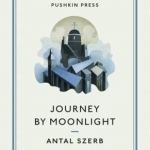
Journey by Moonlight
Antal Szerb, Len Rix and Eoin Ryan
Book
A major classic of 1930s literature, Antal Szerb's Journey by Moonlight (Utas es Holdvilag) is the...

